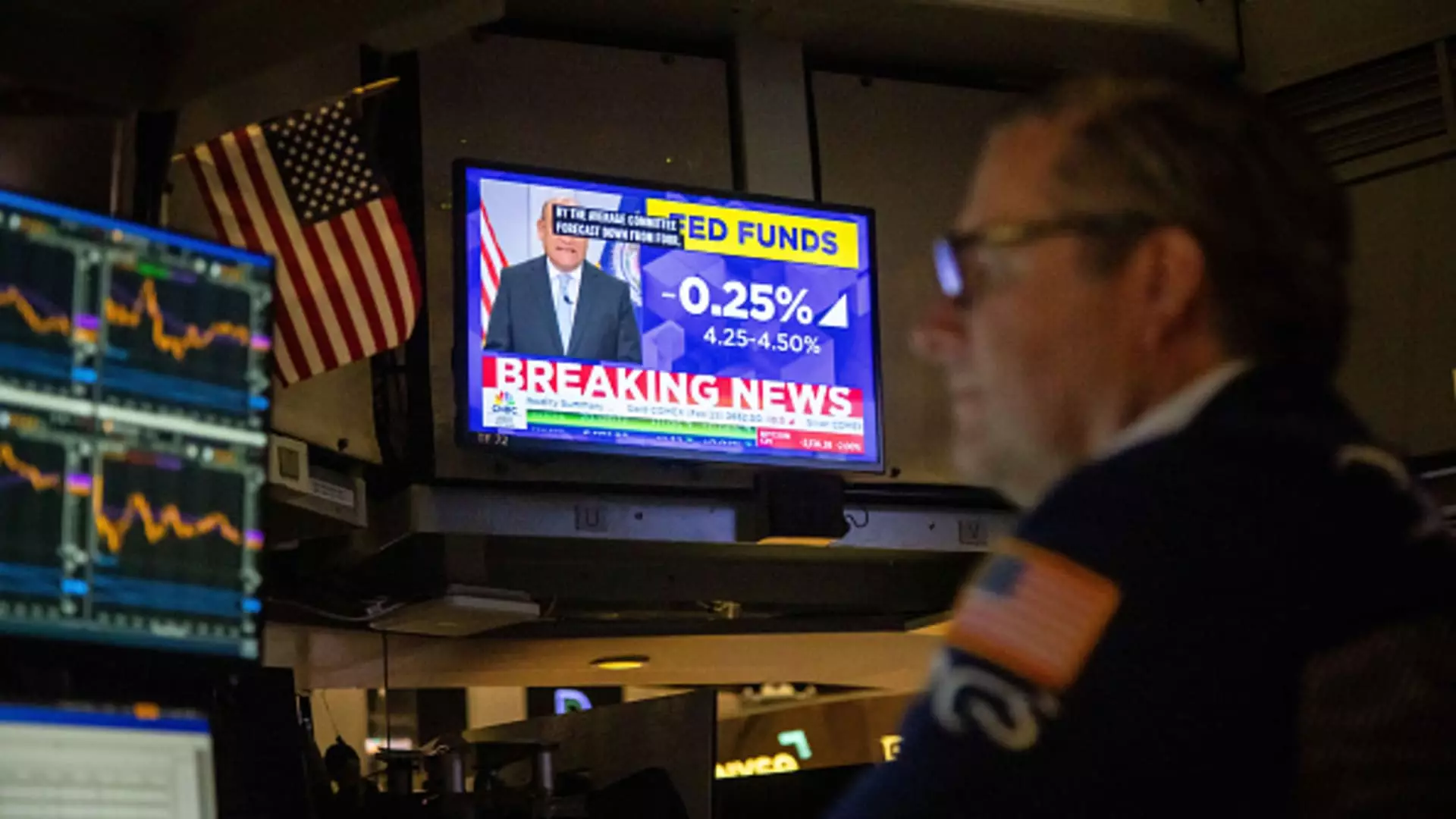Recent developments in the financial landscape have sent ripples of volatility through Wall Street, most notably highlighted by a dramatic surge in the CBOE Volatility Index, commonly known as the VIX. On a day marked by considerable market turmoil, the Federal Reserve’s announcement signifying a reconsideration of its interest rate-cutting strategy triggered an almost unparalleled spike in investor anxiety. The VIX, which acts as a fear gauge for market participants, surged by an astonishing 74%, closing at 27.62, a drastic jump from a more tranquil level of around 15 earlier that same day. Positioned as the second-largest percentage increase in its history, this movement underscores the delicate balance between monetary policy and market sentiment.
The VIX measures market expectations of near-term volatility and is predominantly influenced by the pricing of S&P 500 index options, including both put and call options. A notable characteristic of the VIX is its ability to reflect collective investor sentiment: a higher index value indicates increasing fear among investors, often leading to increased demand for protective put options. This recent spike following the Fed’s communication sends a clear message about investor sentiment; the perception surrounding economic stability has suffered a significant blow. With the Fed forecasting only two rate cuts for the following year—down from four—investors who were hoping for more generous monetary policy to sustain the ongoing bull market are understandably rattled.
In the wake of the Fed’s remarks, the broader stock market experienced tumult, epitomized by the Dow Jones Industrial Average’s staggering decline of 1,100 points, marking its tenth consecutive day in the red. Such a downturn is not merely a statistical blip; it is a substantial reflection of the anxiety permeating through investor minds. Historically, a VIX reading above 20 signals heightened fear, and yet, prior to this surge, the index had remained subdued, suggesting a long-term investor complacency which is now being starkly reevaluated.
Interestingly, even within the same calendar year, unprecedented moments of volatility have occurred. For instance, there was a notable increase in the VIX back in August 2024, driven by recession fears and other macroeconomic stressors which led to a historical surge exceeding 65 at one point during intraday trading. Such fluctuations not only tell a story of immediate investor concerns but also raise questions about the broader economic outlook and the underlying health of the financial system.
As we look ahead, investors are tasked with navigating increasingly turbulent waters as they reassess risk and strategy amidst a backdrop of uncertainty. The volatility represented by the VIX serves as a reminder of the fragility of market confidence and the rapid shifts that can arise from central bank decisions. It is essential for market participants to remain vigilant, actively managing their portfolios with a balanced approach that considers both risk mitigation and opportunities for growth amidst the uncertainty. The recent VIX surge should prompt a strategic rethink, challenging investors to adapt quickly to the evolving landscape of financial markets. As history has shown, maintaining adaptability in strategy can often prove crucial in weathering such stormy market conditions.

